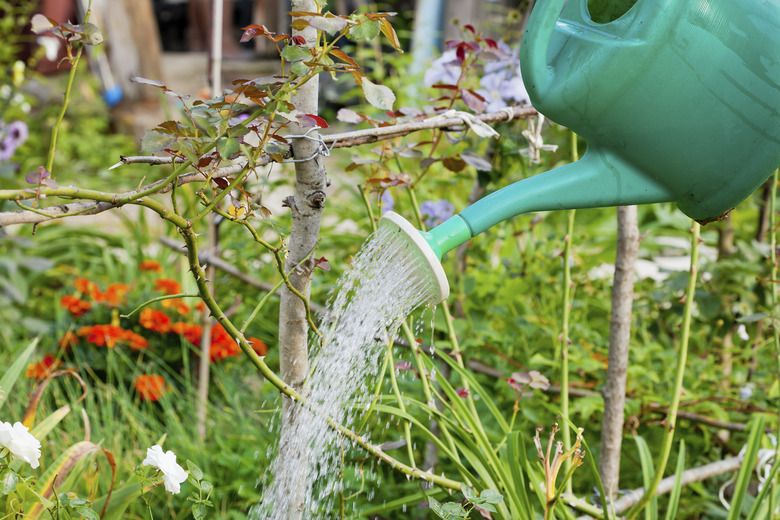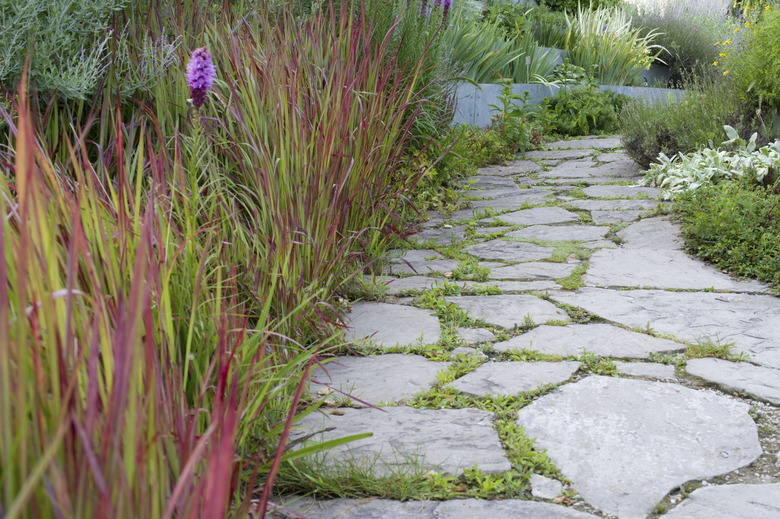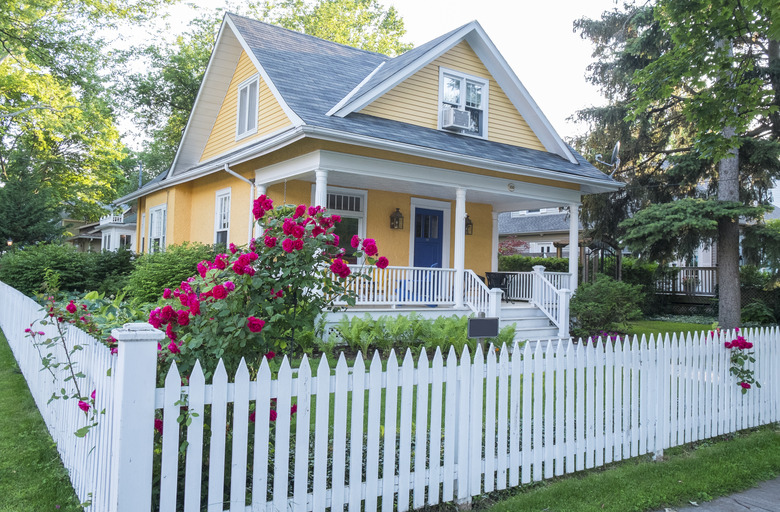Traditional Bungalow Landscaping
A traditional bungalow house is a small, single-family Craftsman-style home that was popular in the United States during the 1910s and 1920s. The homes often consist of a welcoming porch and many windows. Landscaping designs enhance the Craftsman style while simultaneously creating a romantic cottage look. Traditional bungalow landscape does not merely consist of attractive garden beds; it is also an extension of the home, creating relaxing retreats.
Step 1
Traditional bungalow landscapes often consist of planned garden bed areas. The gardens are carefully mapped out into a tasteful design, taking into account pathways and sitting areas. Flowering plants combined with green shrubs accent the garden beds. Fresh mulch or garden pebbles may lightly cover the planting beds to prevent weed growth and create a visually appealing appearance. Stones or decorative garden edging often lines the outer edge of the garden beds, separating them from the rest of the landscape.
Plants
Step 1
The plants used in traditional bungalow landscaping are smaller versions of their original cultivars, such as dwarf trees and shrubs. Bungalow houses are often small and decorative, so the plants chosen should fit in scale and not overshadow the home. Evergreens and deciduous plants freckle the landscape to create year round color. The cottage-style garden makes use of native plants that thrive in the local soil and weather conditions. Heirloom plant species are a favorite of bungalow landscapes, as are showy roses and climbing rose varieties. Many of the flowering plants are chosen to attract hummingbirds and butterflies to the garden.
Step 2
- Traditional bungalow landscapes often consist of planned garden bed areas.
- The plants used in traditional bungalow landscaping are smaller versions of their original cultivars, such as dwarf trees and shrubs.
Pathways, Gates and Archways
Step 1
The bungalow garden makes use of pathways, gates and archways to create a livable landscape setting. White picket fences often surround the yard, and a decorative gate welcomes guests. Stone or sand-set brick paths lead through small garden beds and under decorative archways. The pathways may be made with garden pebbles, with smooth garden glass mixed in to add color. Climbing roses and fragrant flowering vines are trained to climb the fences and archways.
Patios
Step 1
The purpose of the patio is to add more livable space onto the home while creating a relaxing area outdoors. The patio may be small, with only a bench, or larger and consisting of small patio tables and chairs or a swing. Bungalow patios make use of natural stone materials and usually connect to garden pathways. There may be a series of small patios throughout the garden, making several relaxing retreats.
Step 2
- The bungalow garden makes use of pathways, gates and archways to create a livable landscape setting.
- Bungalow patios make use of natural stone materials and usually connect to garden pathways.
Materials
Step 1
The materials used in a bungalow landscape mainly reflect the natural environment. Natural stones surround garden beds and create paths, and wooden benches or chairs allow resting. Fences are often made from small wood pickets or wrought iron. Picket fences are often painted white. Wood chips may be used to mulch the garden beds. Cement bird baths or fountains are also typically seen in bungalow landscapes.
References
- House Plans: Bungalow House Plans
- "The Complete Guide to Creative Landscapes: Designing, Building, and Decorating Your Outside Home"; Jerri Farris, et al; 2000




